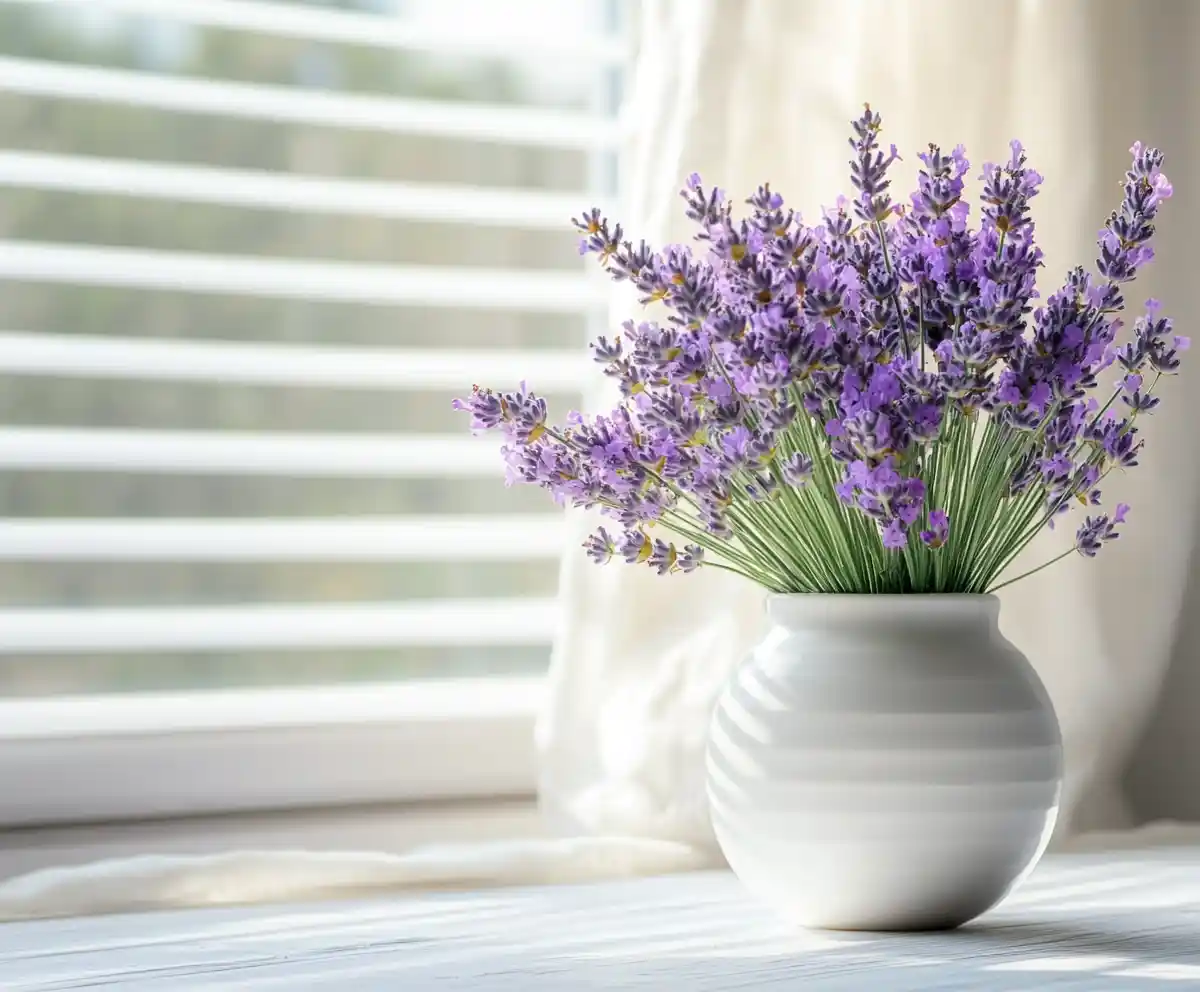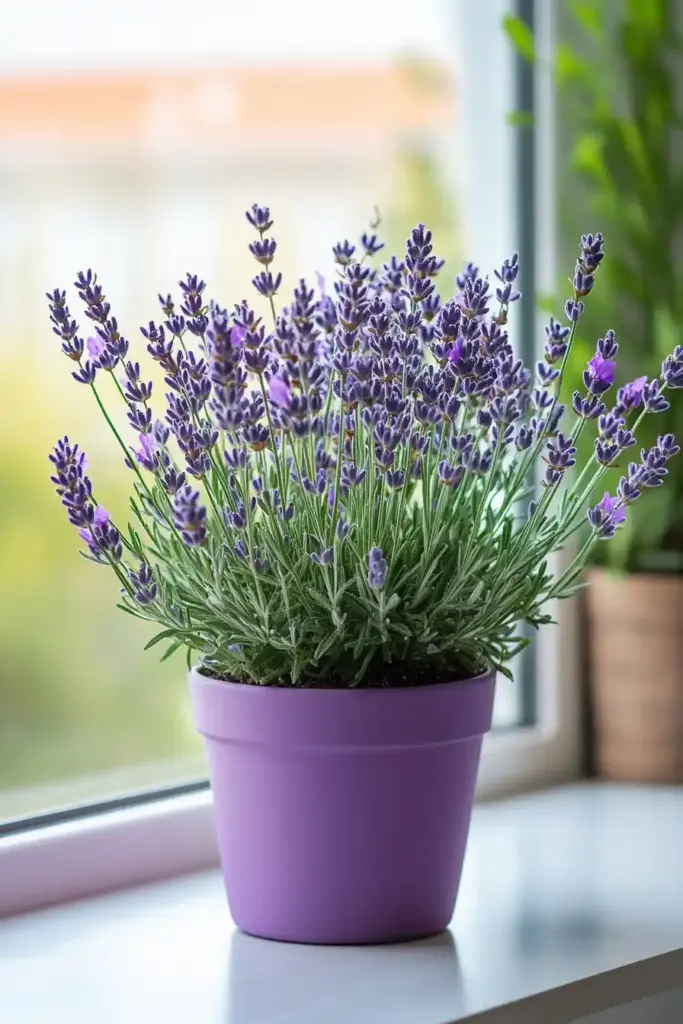Dreaming of filling your home with the calming scent and vibrant beauty of lavender? Good news — you can absolutely grow lavender indoors, even if you don’t have a sprawling garden or a sunny backyard. With the right techniques and a little dedication, your favorite fragrant herb can thrive right inside your home, adding charm, color, and a touch of nature to your living space. Let’s dive into the simple, effective tactics that will help you cultivate healthy, happy lavender plants indoors.
Choose the Right Variety
When it comes to successfully growing lavender indoors, choosing the right type of plant is the first — and one of the most important — steps. Not all lavender varieties are suited for life inside. Compact, hardy types tend to adapt better to indoor environments where space and airflow might be limited.
Best Lavender Varieties for Indoors:
- English Lavender (Lavandula angustifolia): Known for its sweet scent and compact growth, English lavender is a top choice for indoor gardens. It stays manageable in size and thrives with the right care.
- French Lavender (Lavandula dentata): With its fringed leaves and strong fragrance, French lavender also adapts well to indoor conditions, especially if you provide plenty of sunlight.
Choosing these indoor-friendly varieties sets you up for success from the start, ensuring your lavender plant has the best chance to flourish.
Pick the Perfect Pot
Selecting the right pot is another crucial step when you grow lavender indoors. Lavender plants don’t like to sit in waterlogged soil, so choosing a container that promotes excellent drainage is key to keeping your plant healthy.
Tips for Choosing the Best Pot:
- Size Matters: Pick a pot that’s about 12 inches wide. This gives the roots enough room to spread and helps prevent overcrowding.
- Material Choice: Terracotta pots are a fantastic option because they’re breathable, allowing excess moisture to evaporate and helping prevent root rot.
- Drainage is Essential: Always choose a pot with multiple drainage holes at the bottom. Without proper drainage, your lavender could suffer from soggy soil and root problems.
The right pot sets the stage for strong, vibrant growth — giving your indoor lavender a solid foundation to thrive.
Find the Sunniest Spot
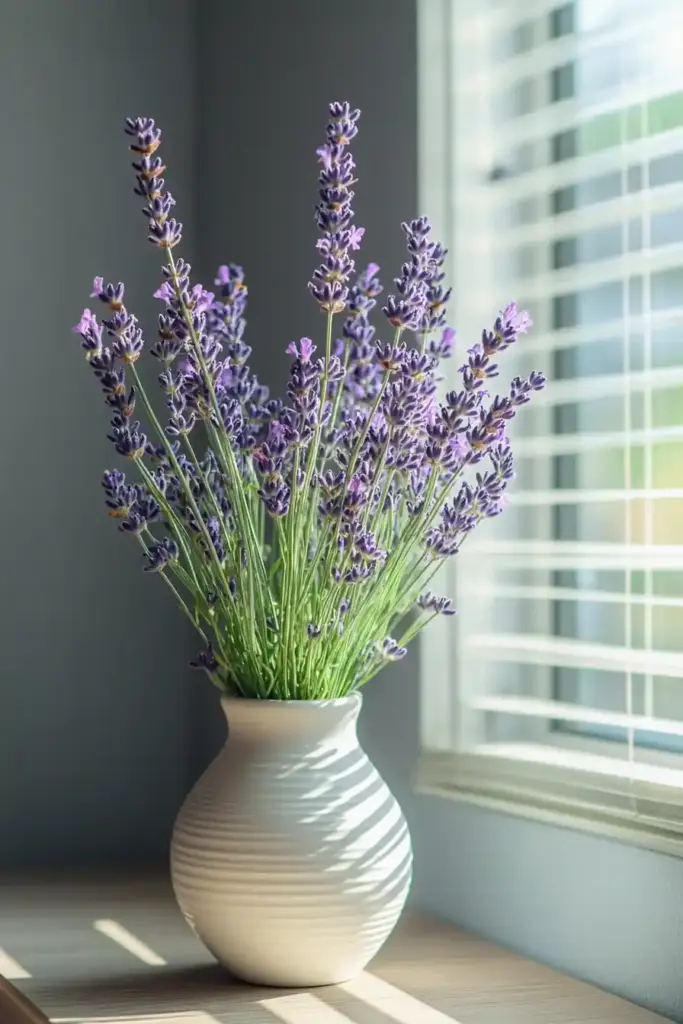
Light is absolutely essential if you want to successfully grow lavender indoors. Lavender loves the sun, and without enough bright light, it can quickly become leggy and weak.
How to Get the Light Just Right:
- South-Facing Windows Are Best: Place your lavender near a south-facing window where it can soak up at least 6 hours of direct sunlight each day.
- Supplement with Grow Lights: If natural sunlight is limited — especially during the winter months — invest in a quality grow light to keep your lavender thriving. Aim to mimic full-spectrum sunlight for the best results.
Maximizing light exposure helps your indoor lavender stay strong, fragrant, and full of beautiful blooms.
Water Wisely
When you grow lavender indoors, watering can be a bit tricky — too much or too little can both cause problems. Lavender prefers dry conditions over being overly wet, so it’s important to strike the right balance.
Best Watering Practices:
- Check the Soil First: Before watering, always check if the top inch of soil feels dry. If it’s still damp, wait a bit longer.
- Deep, Thorough Watering: When it’s time to water, give the soil a good soak until water drains from the bottom of the pot. Then, make sure to empty any excess water from the saucer to prevent root rot.
- Avoid Overwatering: Frequent, shallow watering can weaken the plant. It’s better to water deeply but less often.
By mastering your watering routine, you’ll encourage a strong root system and a resilient, happy lavender plant.
Use the Right Soil
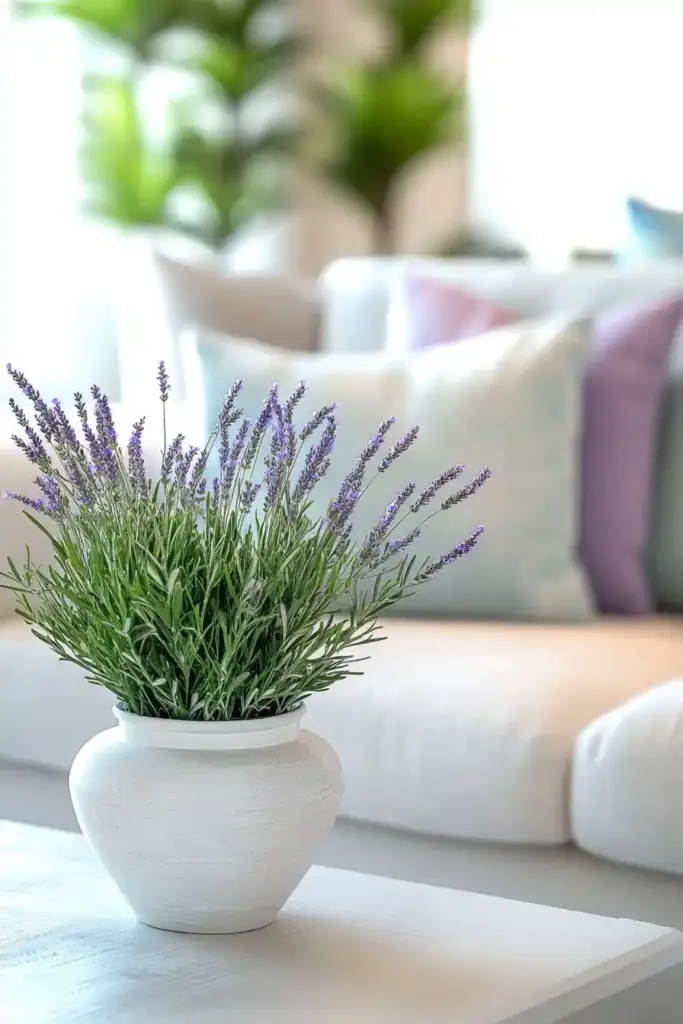
Soil quality plays a major role when you grow lavender indoors. This Mediterranean native thrives in light, well-draining soils — not heavy, moisture-retentive mixes that can lead to root problems.
How to Choose the Best Soil for Indoor Lavender:
- Cactus or Succulent Mix: These are excellent choices because they are designed to drain quickly, just like lavender prefers.
- DIY Soil Blend: You can also amend regular potting soil by mixing in coarse sand or perlite. Aim for a light, airy texture that doesn’t hold too much moisture.
The right soil helps prevent overwatering issues and provides the ideal environment for strong, healthy root development.
Control the Temperature
Maintaining a consistent temperature is key when you grow lavender indoors. Lavender loves a warm, stable environment that mimics its natural Mediterranean habitat.
Ideal Temperature Tips:
- Daytime Comfort: Aim to keep the room between 60–70°F (16–21°C) during the day. This range encourages healthy growth without stressing the plant.
- Protect from Drafts: Avoid placing your lavender near cold drafts, open windows in winter, or right next to heating vents. Sudden temperature changes can shock the plant and stunt its growth.
By creating a cozy, consistent climate, you’ll help your lavender thrive year-round inside your home.
Prune Your Plant
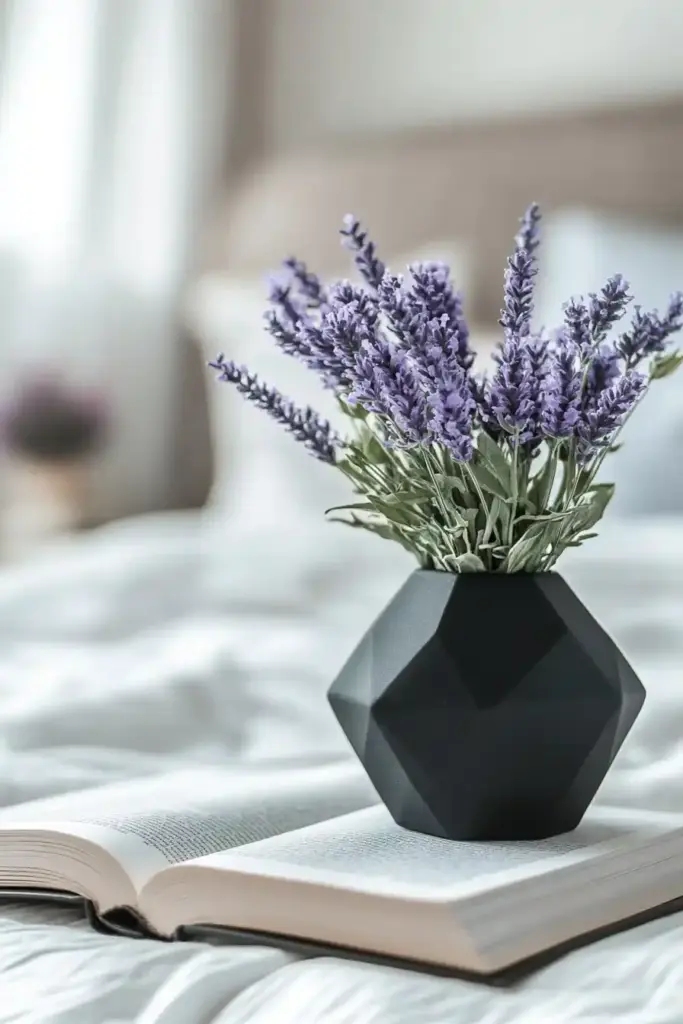
Regular pruning is essential to keeping your indoor lavender healthy and looking its best. When you grow lavender indoors, pruning helps encourage bushier growth and more abundant blooms.
How to Prune Lavender Indoors:
- Spring Trimming: In early spring, trim back about one-third of the plant. This stimulates new growth and keeps the plant compact and tidy.
- Deadheading: Pinch off spent flowers as they fade. This not only keeps your lavender looking neat but also encourages it to put energy into producing more blooms.
With just a little regular maintenance, your indoor lavender will stay lush, vibrant, and full of life.
Fertilize Occasionally
While lavender isn’t a heavy feeder, a little nutrition boost now and then can go a long way when you grow lavender indoors. The key is to feed sparingly to support healthy growth without overwhelming the plant.
Smart Fertilizing Tips:
- Light Feeding: Apply a diluted, balanced fertilizer about every six weeks during the active growing season (spring and summer).
- Less is More: Avoid over-fertilizing, as too much fertilizer can lead to excessive leafy growth and fewer fragrant flowers.
A gentle, occasional feeding schedule will help your lavender stay strong, vibrant, and blooming beautifully.
Watch for Pests
One of the perks when you grow lavender indoors is that it’s relatively resistant to pests. However, it’s still smart to keep an eye out for any unwanted visitors that could harm your plant.
Common Indoor Lavender Pests:
- Spider Mites: These tiny critters can cause fine webbing and speckled leaves.
- Aphids: Small, soft-bodied insects that cluster on new growth and flower buds.
How to Handle Pests Naturally:
- Inspect Regularly: Check the undersides of leaves and stems every week.
- Treat Gently: If you spot pests, wipe them off with a damp cloth or spray with a natural insecticidal soap solution.
By staying vigilant, you can quickly catch and treat any issues before they cause major damage, keeping your indoor lavender thriving.
Frequently Asked Questions (FAQ)
Can lavender survive indoors year-round?
Yes! With the right care — like plenty of sunlight, proper soil, and careful watering — you can successfully grow lavender indoors all year long. Just be mindful of light levels, especially during the shorter winter months.
How often should I water lavender indoors?
Indoor lavender typically needs watering once every 1–2 weeks, depending on temperature and humidity. Always let the top inch of soil dry out before watering thoroughly.
What type of lavender is best for growing indoors?
English lavender (Lavandula angustifolia) and French lavender (Lavandula dentata) are the best varieties to grow indoors because they stay more compact and adapt better to container life.
Do I need a grow light for indoor lavender?
If your lavender doesn’t get at least 6 hours of direct sunlight daily from a south-facing window, using a full-spectrum grow light can help it thrive, especially during darker seasons.
Why is my indoor lavender leggy?
Leggy lavender usually means it’s not getting enough light. Move it closer to a sunny window or add a grow light to encourage fuller, bushier growth.
Conclusion
Growing lavender indoors is a wonderfully rewarding experience that brings beauty, fragrance, and a sense of calm right into your living space. By choosing the right variety, providing plenty of sunlight, using well-draining soil, and giving a little extra care through pruning and occasional feeding, you can enjoy thriving lavender plants year-round. With just a few simple tactics, even beginner gardeners can successfully grow lavender indoors and create a cozy, aromatic haven at home. Happy planting!
🌿 Love gardening inspiration? Follow me on Pinterest for bold plant ideas, tips, and seasonal color!
More Posts
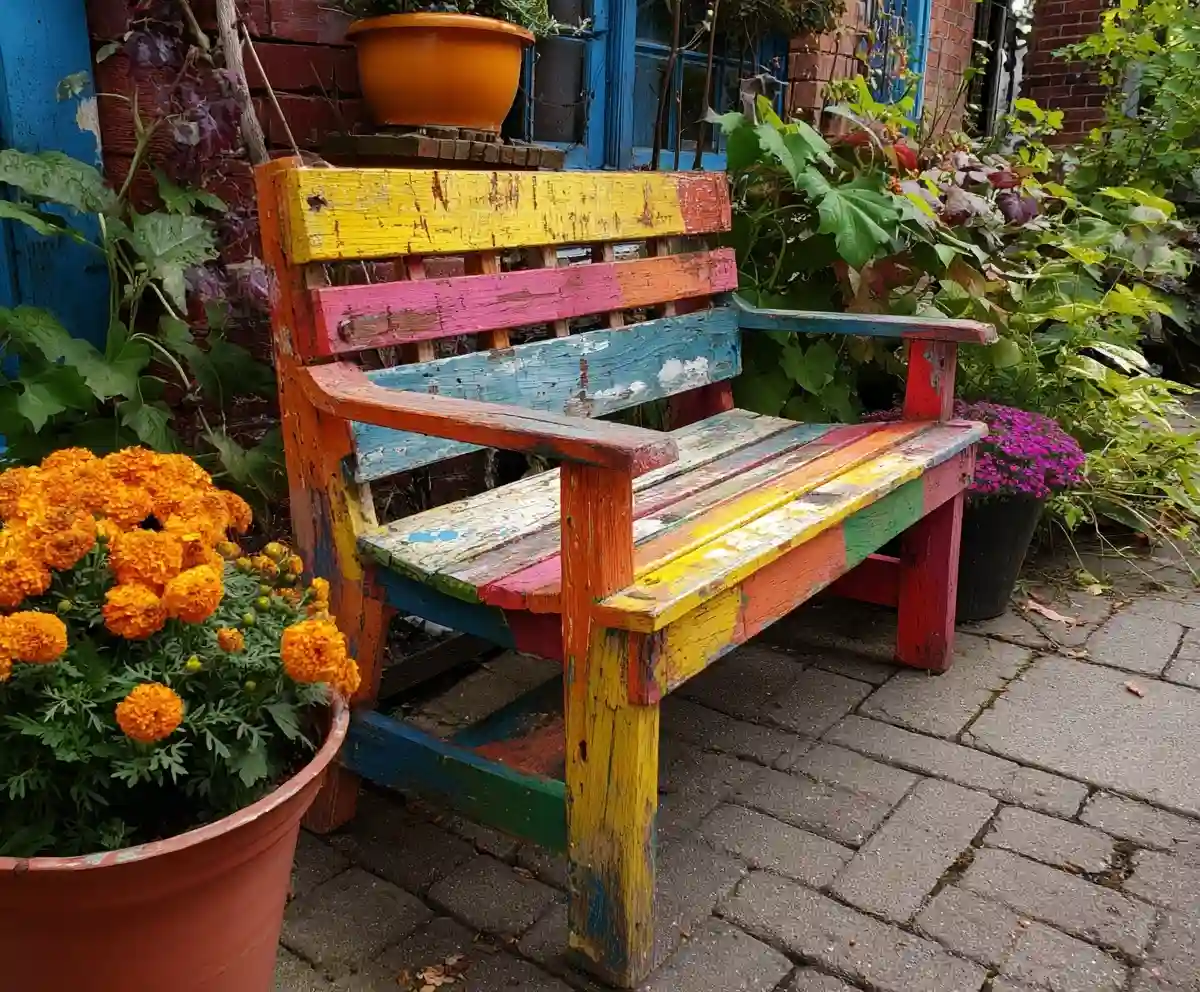
19+ Budget-Friendly Backyard Makeover Ideas
Backyard makeover ideas can turn even the most ordinary outdoor space into a warm, inviting retreat—without draining your wallet.
Read More →
21 Stunning & Simple DIY Clematis Trellis Designs
DIY clematis trellis designs are a beautiful way to blend creativity with function in your garden.
Read More →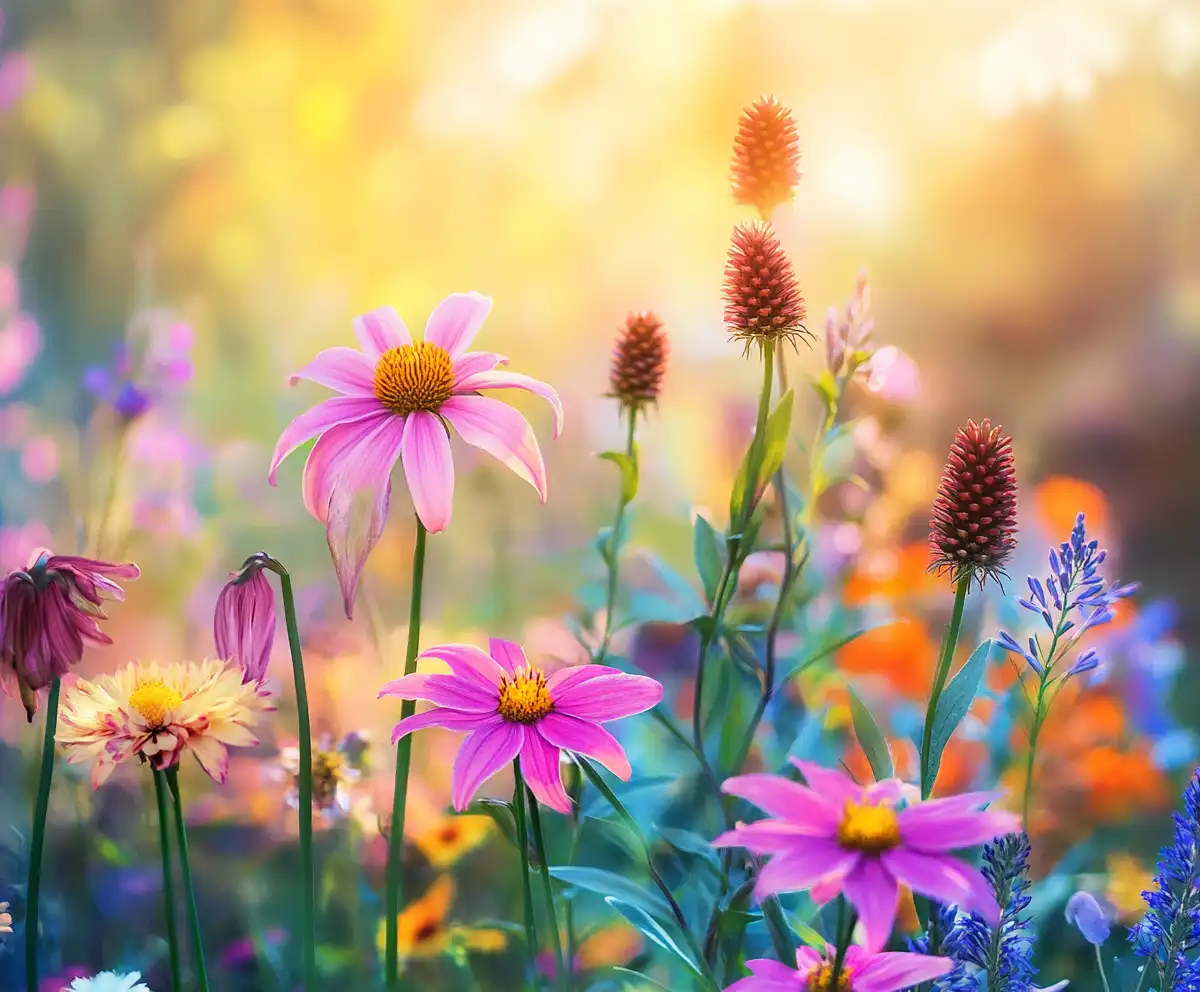
12 Full Sun Perennials That Bloom All Summer
Explore a selection of hardy perennials that flourish and bloom beautifully in full sun throughout the summer.
Read More →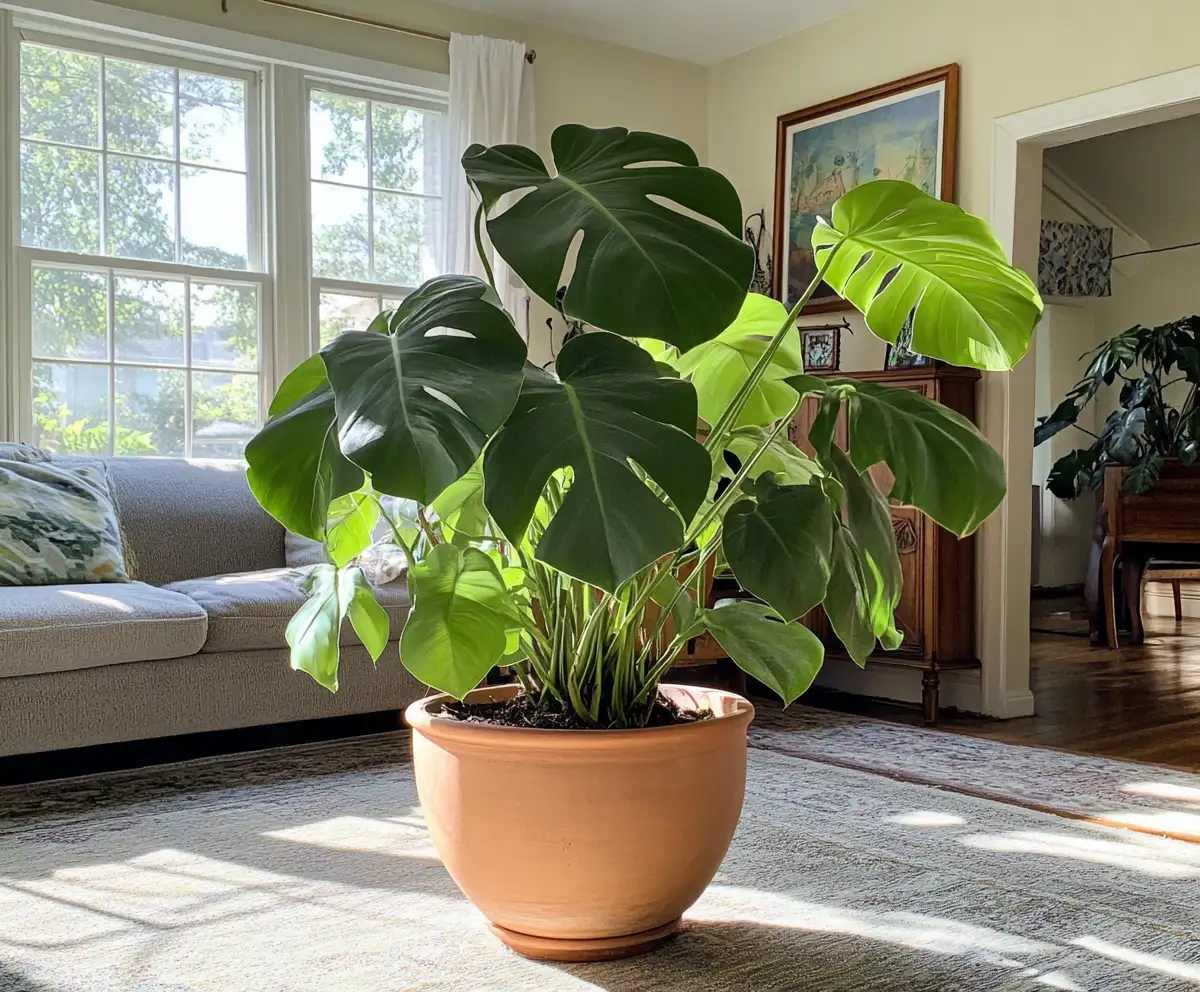
Houseplants for Living Room
Find the perfect houseplants to brighten and purify your living room while adding a touch of nature indoors.
Read More →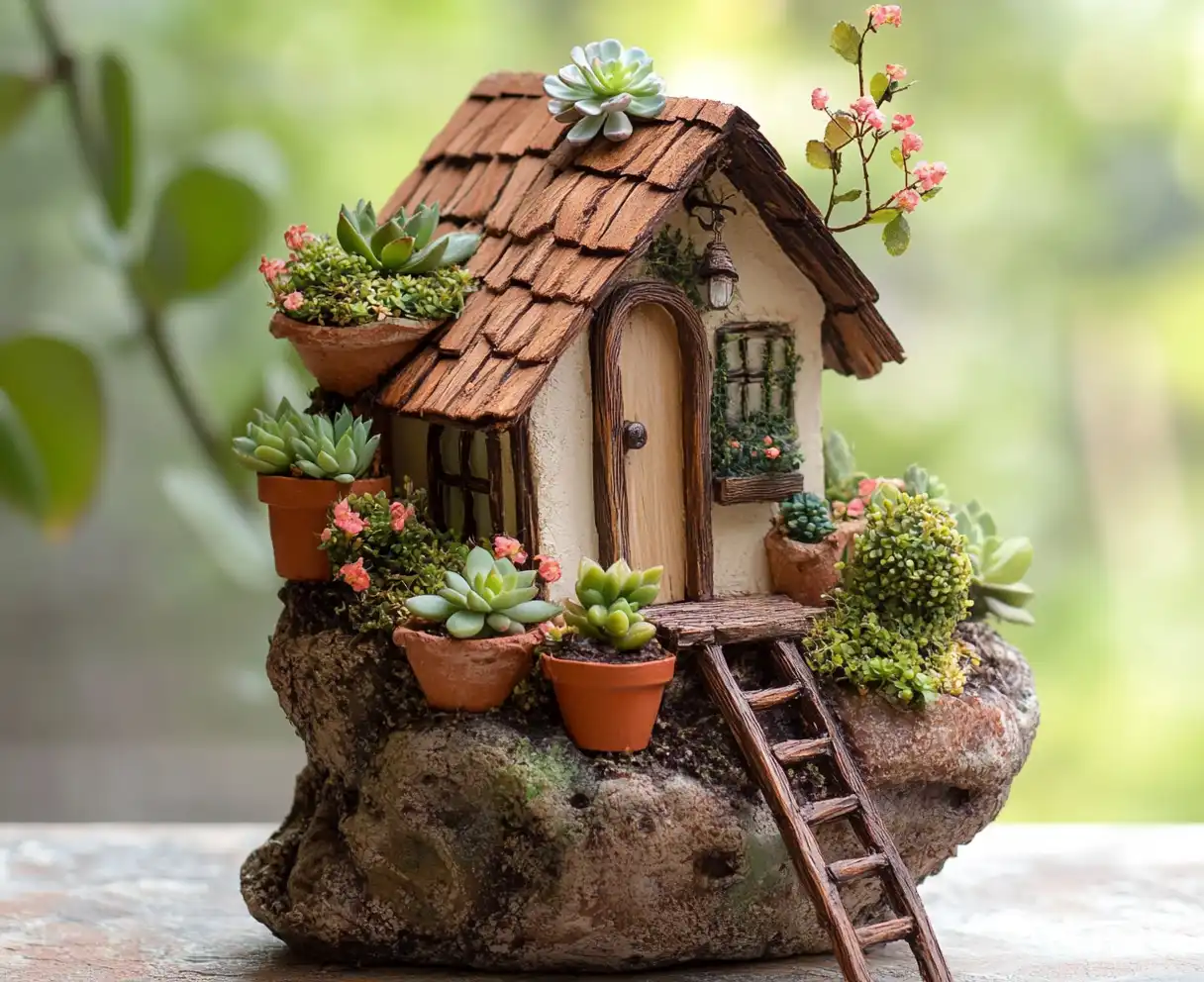
Backyard Play Area for Kids
Create a fun and safe backyard play area for kids with these inspiring design ideas and tips.
Read More →
Top Privacy Trees
Discover top tree varieties that provide natural privacy and enhance your outdoor space.
Read More →
